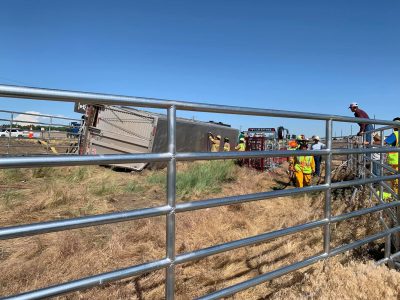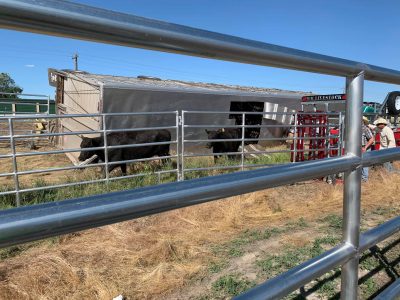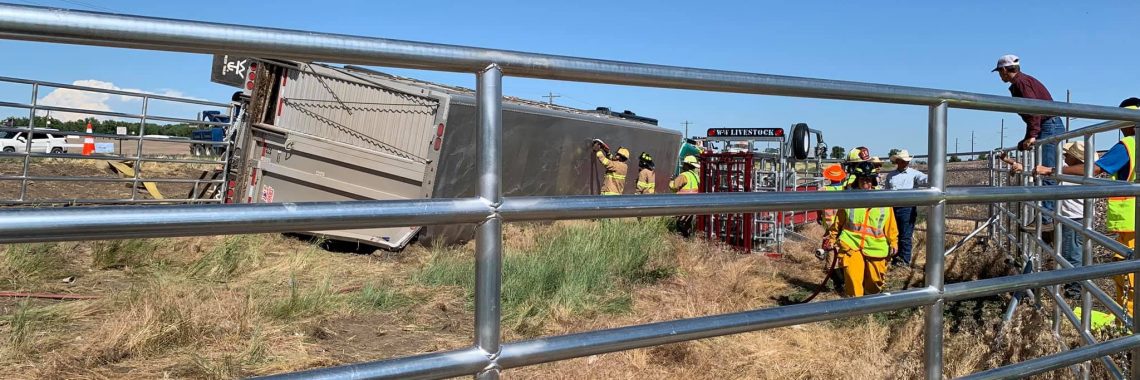 A number of portable corrals and loading chutes are being deployed and stationed across Wyoming and training offered to emergency personnel and producers to rapidly respond to livestock hauling accidents and minimize livestock loss and traffic issues.
A number of portable corrals and loading chutes are being deployed and stationed across Wyoming and training offered to emergency personnel and producers to rapidly respond to livestock hauling accidents and minimize livestock loss and traffic issues.
Such training in Goshen County was tested with recent livestock truck wrecks. The county emergency manager indicated the team of emergency personnel and producers worked flawlessly and cleared the wreck in two-thirds less time than had been done in previous incidents (see photos).
University of Wyoming Extension Agriculture and Horticulture Initiative Team members have been working with county emergency managers, brand inspectors, veterinarians, law enforcement, and producers the last three years to equip and train teams.
Portable corrals and loading chutes have been stationed across the state with the support of the Wyoming Office of Homeland Security and the above groups. Our Wyoming team has also led the effort in Colorado and Montana.
Although the process of equipment placement is under way, bringing agriculture producers into play with response agencies is critical since they tend to be the best handlers, and the agencies are starting to learn the valuable role livestock managers can provide.
Developing a call tree with access to livestock handling equipment so trained local producers can
help authorities respond to livestock accidents is a crucial step for western states.
An average livestock truck hauls over 50,000 pounds of beef, sheep, or swine. These trucks face the same traffic and weather challenges as generic travelers, but they often carry an entire year’s worth of production. Public safety always has first priority, but training teams to rapidly handle the “property” of livestock during accidents can minimize loss to producers and enhance the speed in which law enforcement clears an accident scene and open traffic corridors.

Teams are trained in the use and deployment of portable corrals, portable loading chutes, emergency decisions, livestock handling under duress, and working with authorities and their guidelines. After that, a contact list is generated through which the county emergency manager can get help from producers. More to the point, these trainings have allowed producers to share their expertise with authorities. That reality can generate better relationships, more expedient responses, better plans, and fewer livestock losses.
Teams have been equipped and trained in Natrona, Goshen, Albany, Lincoln, Sheridan, and Johnson counties with equipment and planning under way for Sublette County. Discussions have already started with Sweetwater and Carbon counties.
For more information, contact your local county extension office or me.





